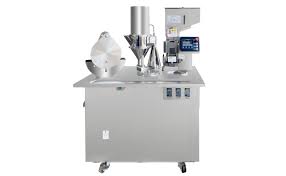Blister Packing Machines: Its Uses
Meeting different product needs
This type of blister packaging machine is flexible enough and highly standardized to pack a wide variety of products. These machines are essential for a range of manufacturers from pharmaceuticals, cosmetics, electronics, and consumer goods because they can accommodate various products. Their modular design & programmable settings are the secret for this versatility.
Customization Features
Today, the majority of blister packer machines are built with an interchangeable tooling system. This capability permits operators to changeover from multiple product sizes and shapes in minutes. This could be as minor as having a machine setup to pack small pharmaceutical tablets and then large beauty items the next day (two a similar size however with a totally unique weight). There are few different models which can take different time for transition but feature the advanced models averages to be 25-30 minutes which rate the downtime significantly.
Material Compatibility
The machines make use of a lot of packaging materials like PVC, PVDC, and aluminum. This versatility is critical for companies that pack a wide range of products, each with different barrier requirements. An obvious example here would be that pharmaceutical products might require more stringent protection against moisture and air, which would be provided by certain materials.
Application of the product and efficiency
Speed and Precision
Blister packing machines allow for high-speed operation, as hundreds to thousands of blister packs can be created per hour. Depending on the product and machine models, the exact output varies. For instance, some high-end machines can reach 1,200 packages per minute, which leads to substantially improved production efficiency.

Accuracy and Waste Reduction
They also come with accurate dosing and cutting mechanisms in place. They guarantee the right quantity of product is in each blister pack, maximizing packaging materials while minimizing waste. Even when switching between products, the advanced sensors and control systems can monitor the packing process and always gives a consistent quality.
Integration in production lines
These machines can be easily integrated with other line equipment such as automatic or semi-automatic cartoners, labelers, etc. This integration is key to ensuring a smooth workflow, especially with more than one product. With it, the whole manufacturing process is optimized, with hardly any manual interventions anytime a new production needs to start — as in being continuous.
Challenges and Solutions
Although blister packing machine can accommodate a wide range of sizes, switching between different products may present more difficulties than with continuous machines, such as setup time and cost. Still, things are getting better thanks to ongoing technology improvements. Manufacturers are also providing new machines replete with automated set-up practices, using programmable logic controllers (PLCs) and touchscreen interfaces to keep track of all settings for different products, allowing smoother, quicker transitionsUPI/Brian Kersey/File Photo Image Credit:Poultry plant (UPI/Brian Kersey/File Photo).
Conclusion
The design and add-on capability of the first blister machines also made them perfect as one of the most valuable, incredibly versatile machines available for diverse manufacturing settings. Able to flex with varying forms, materials and sizes, and to fit in with complete production lines, this ensures that it still holds a vital role in modern packaging technology. Blister pack machines are only getting better with the improvement in automation, and machine intelligence hasnReduced material loss:tilled and proven beyond doubt their flexibility and efficiency.